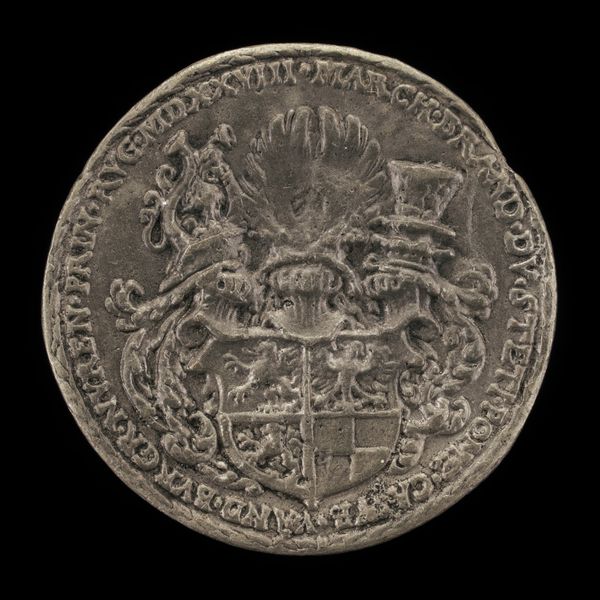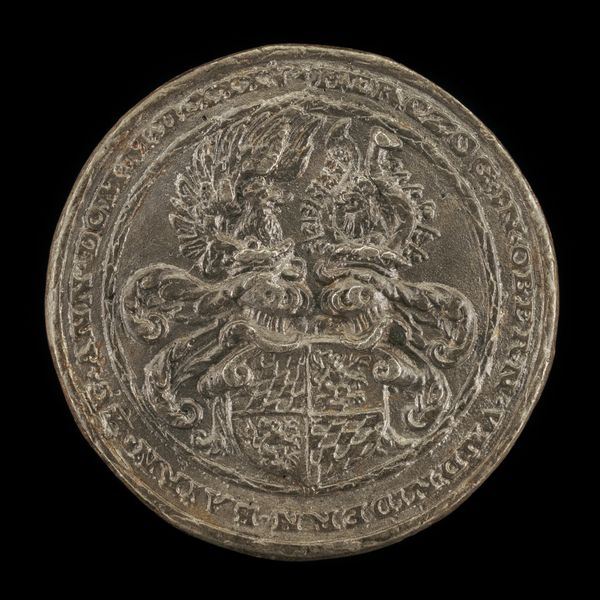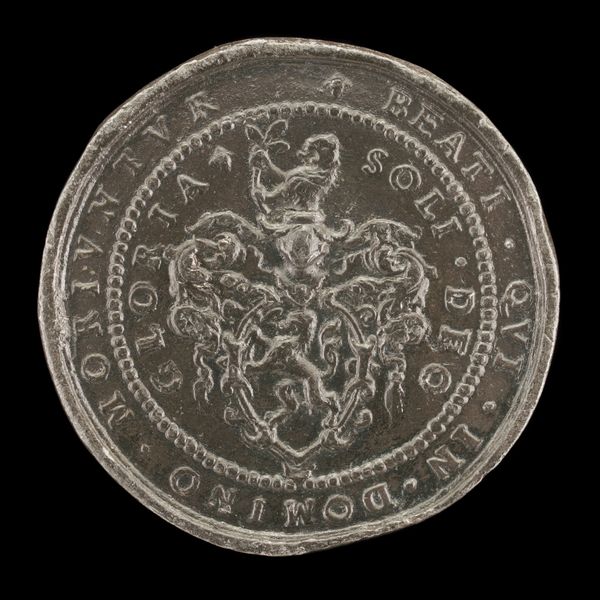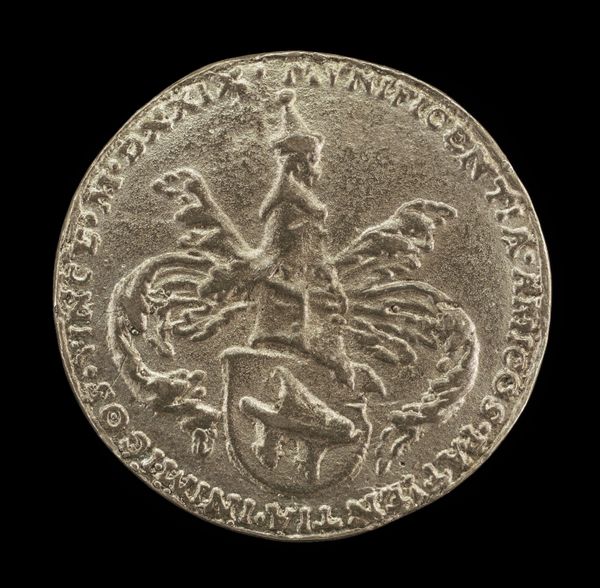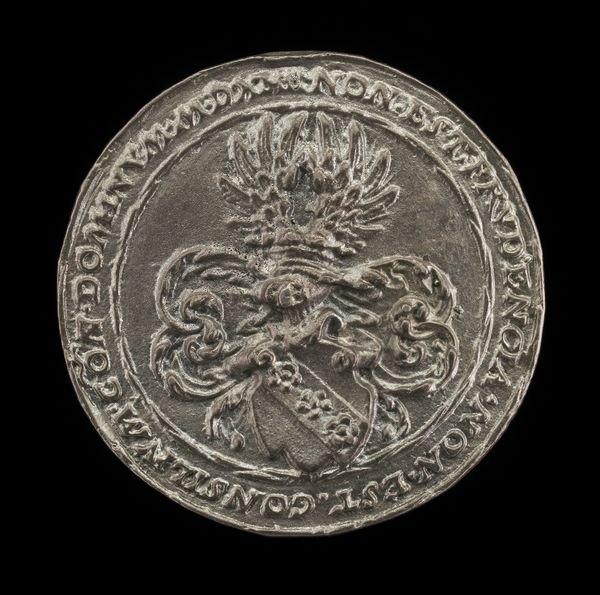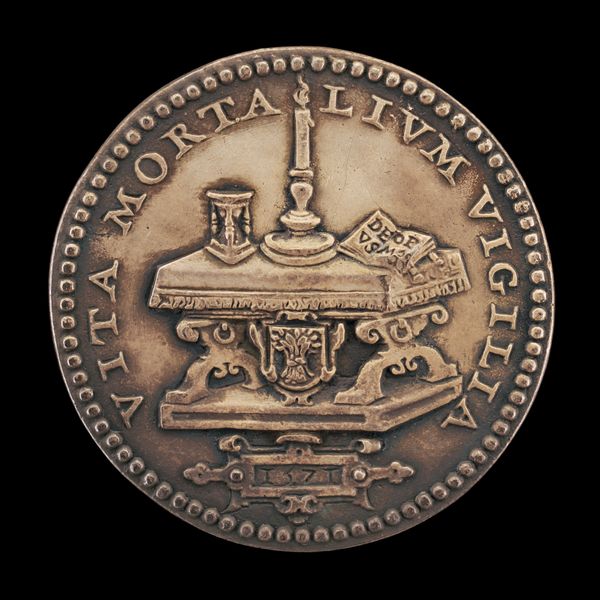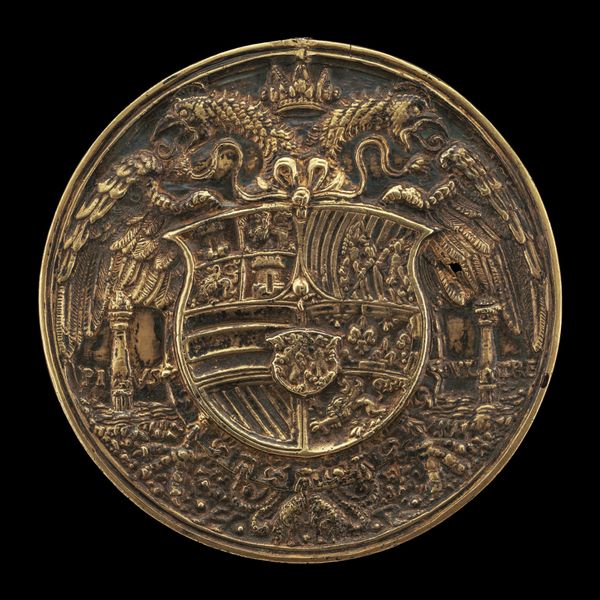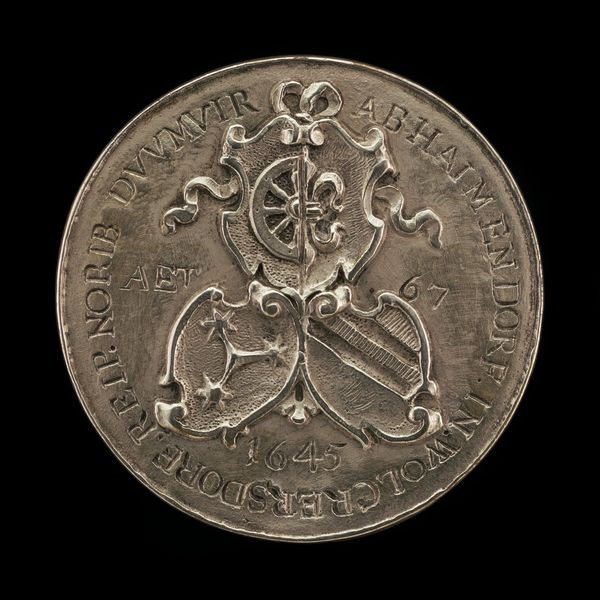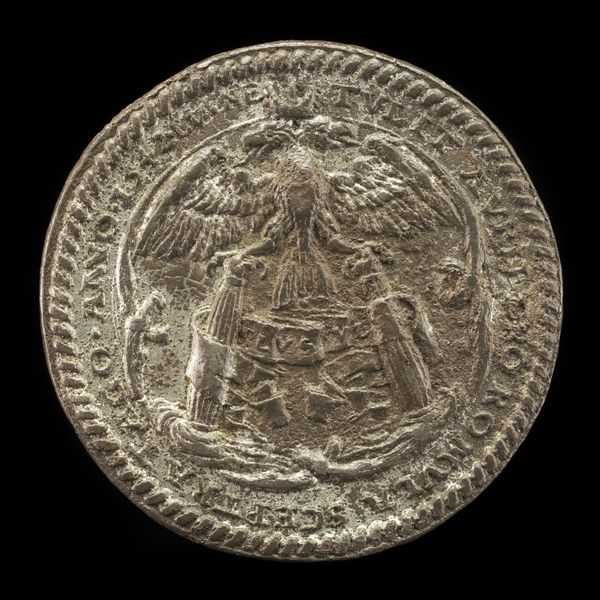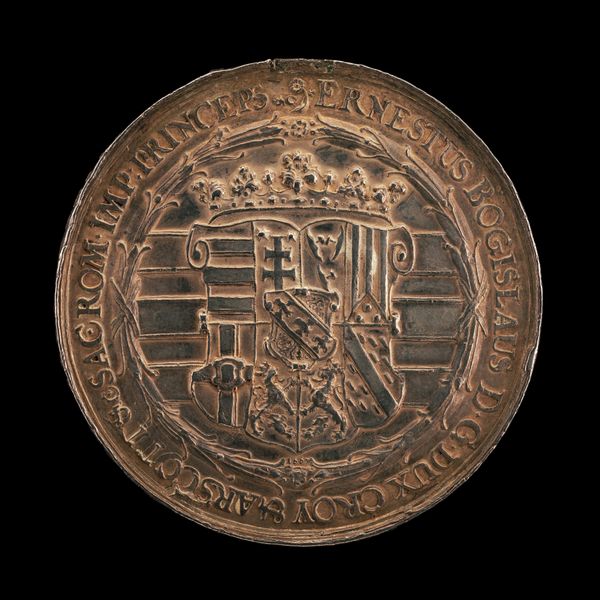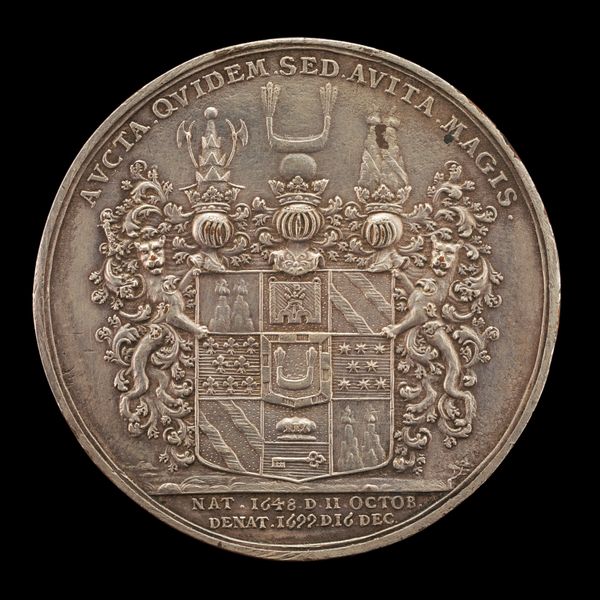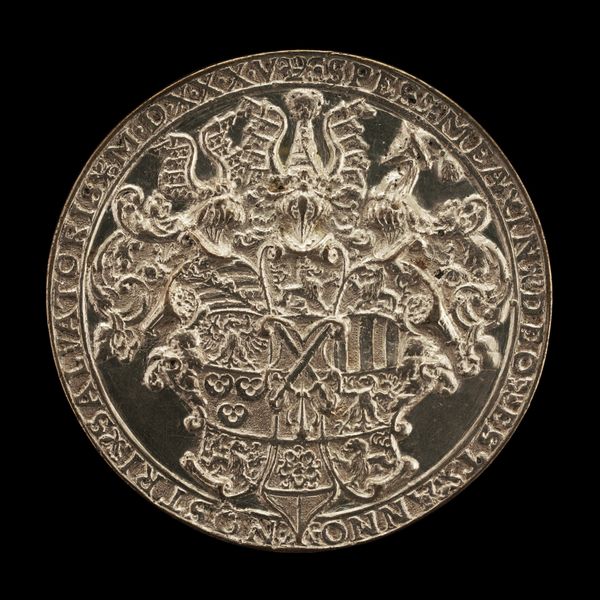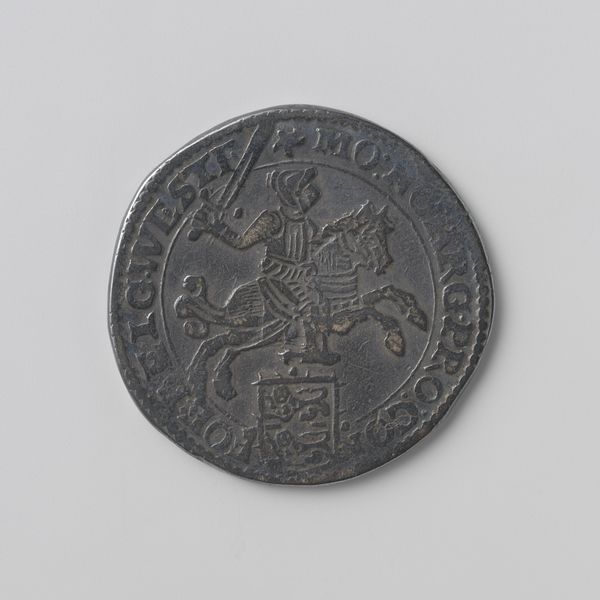![Blazon of Arms [reverse] by Matthes Gebel](/_next/image?url=https%3A%2F%2Fd2w8kbdekdi1gv.cloudfront.net%2FeyJidWNrZXQiOiAiYXJ0ZXJhLWltYWdlcy1idWNrZXQiLCAia2V5IjogImFydHdvcmtzLzA0NDUyMjg1LTg0NTctNDhkNi1iN2RkLWI0MDQ4MjdkNTQ1MS8wNDQ1MjI4NS04NDU3LTQ4ZDYtYjdkZC1iNDA0ODI3ZDU0NTFfZnVsbC5qcGciLCAiZWRpdHMiOiB7InJlc2l6ZSI6IHsid2lkdGgiOiAxOTIwLCAiaGVpZ2h0IjogMTkyMCwgImZpdCI6ICJpbnNpZGUifX19&w=3840&q=75)
carving, metal, relief, sculpture
#
medal
#
carving
#
metal
#
stone
#
sculpture
#
relief
#
11_renaissance
#
sculpture
#
statue
Dimensions: overall (diameter): 4.59 cm (1 13/16 in.) gross weight: 28.54 gr (0.063 lb.) axis: 12:00
Copyright: National Gallery of Art: CC0 1.0
This is a silver medal, made by Matthes Gebel in the 16th century, and features a blazon of arms. In Renaissance Europe, heraldry was not just a decorative system, but a visual language that communicated status, lineage, and allegiance, all critical in a highly stratified society. Gebel, active in Nuremberg, would have been deeply embedded in a culture where these symbols held significant social weight. The image creates meaning through visual codes, heraldic symbols, and historical associations. The design of the blazon may be commenting on the social structures of its own time, self-consciously conservative through a rigid social hierarchy. Understanding an object like this involves archival research into the history of heraldry, the social history of Nuremberg, and the institutional role of medal-making in disseminating status. This helps reveal how art is contingent on its social and institutional context.
Comments
No comments
Be the first to comment and join the conversation on the ultimate creative platform.
